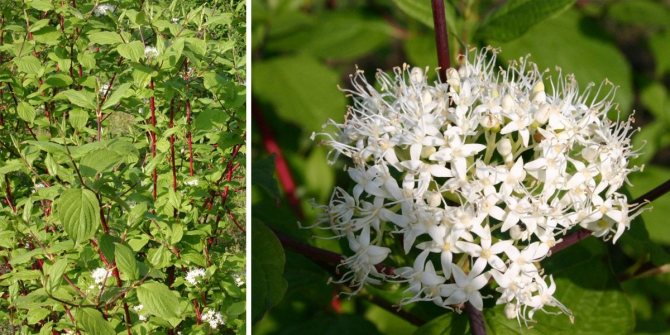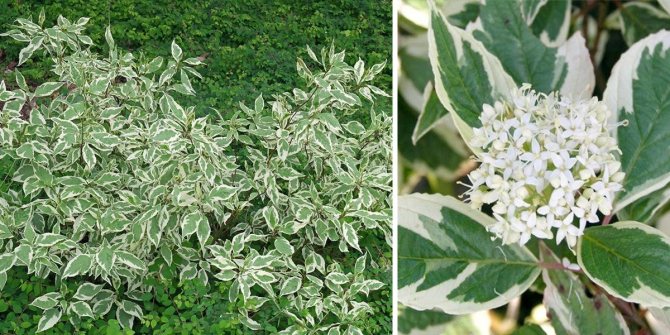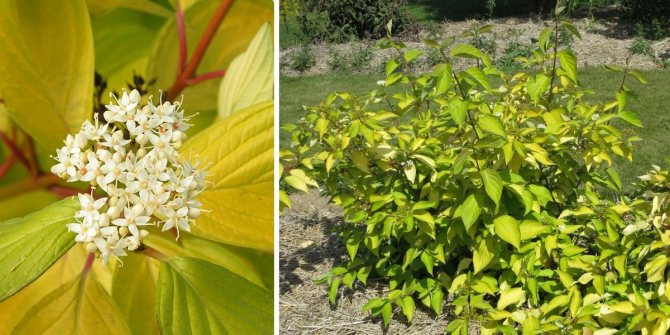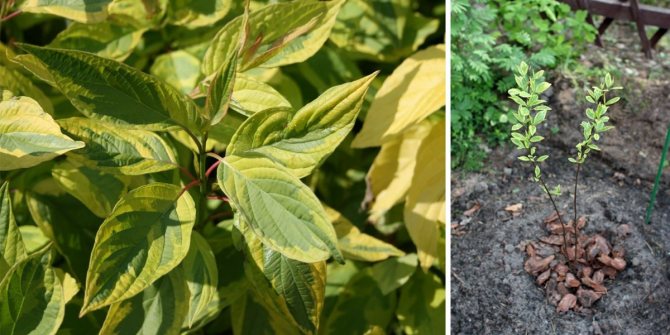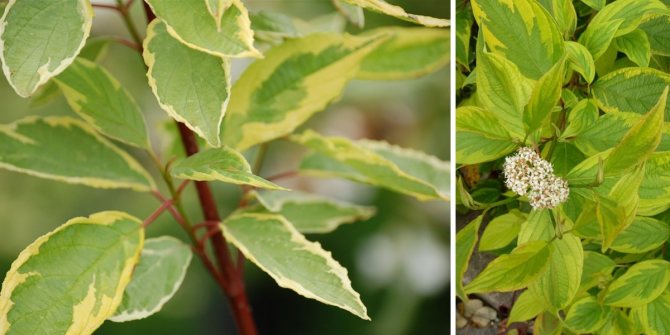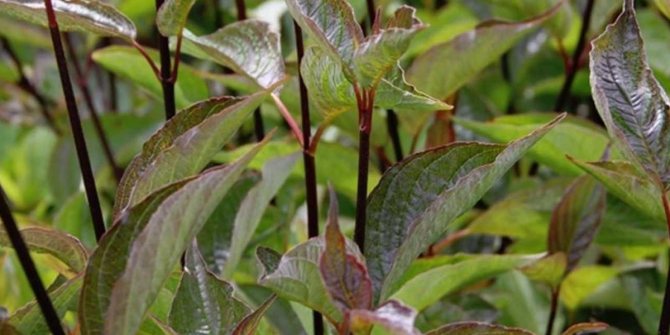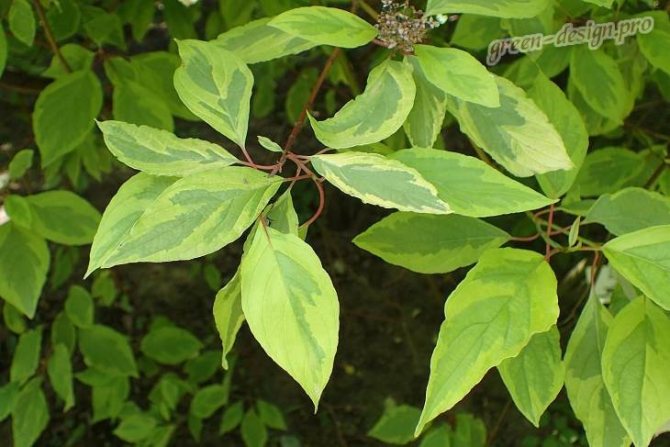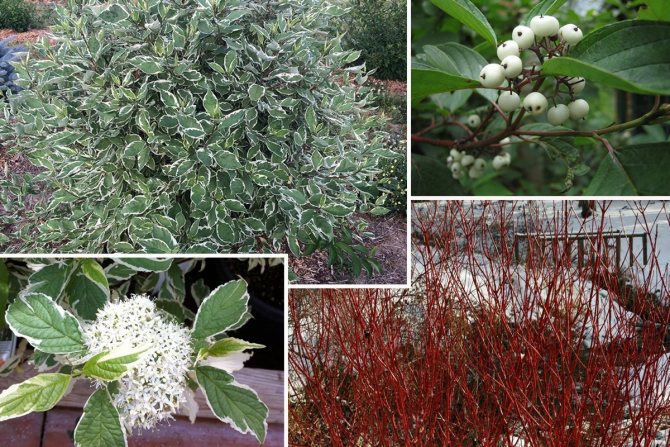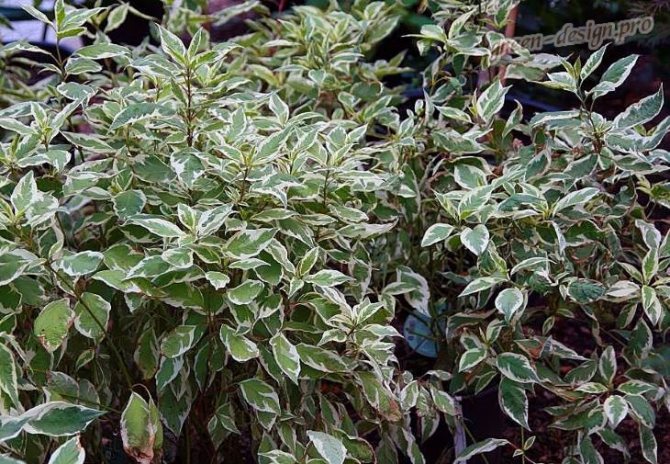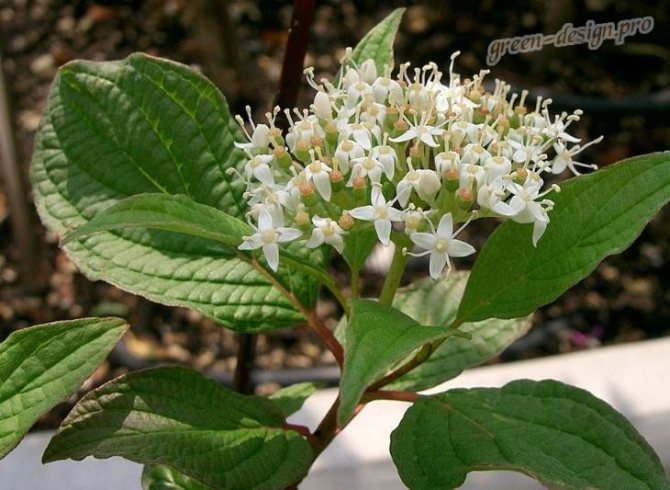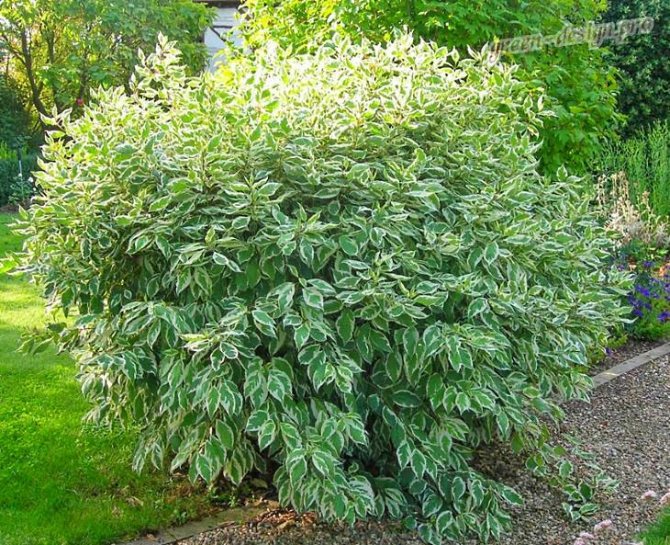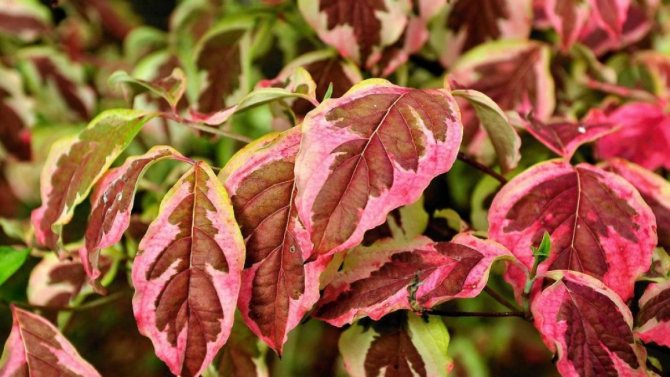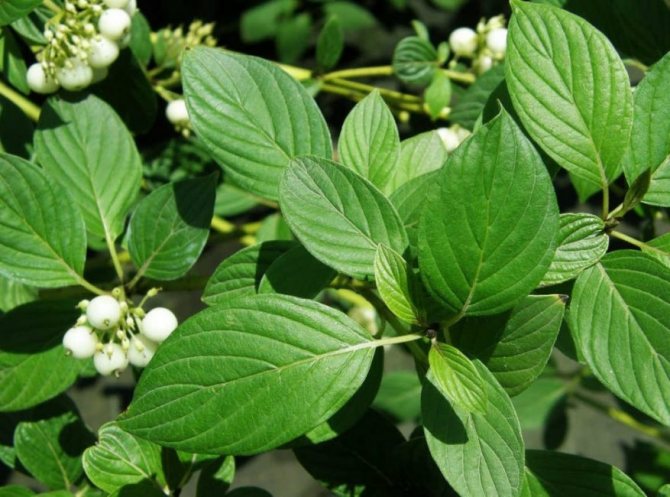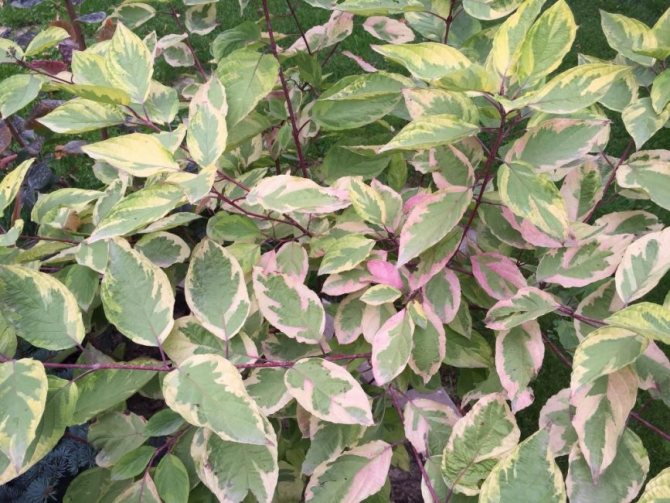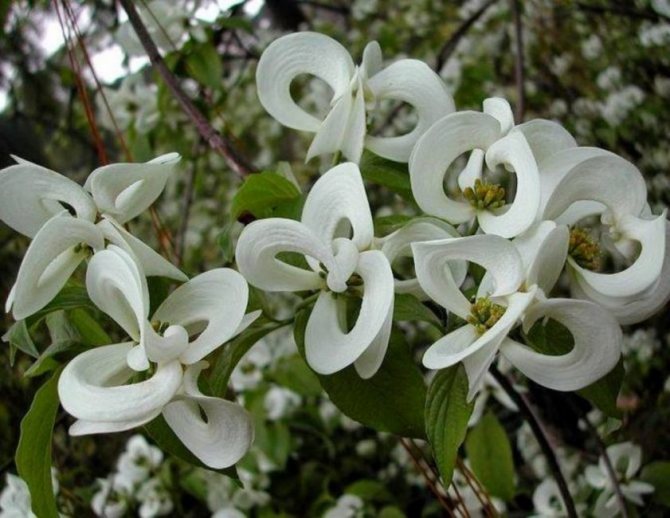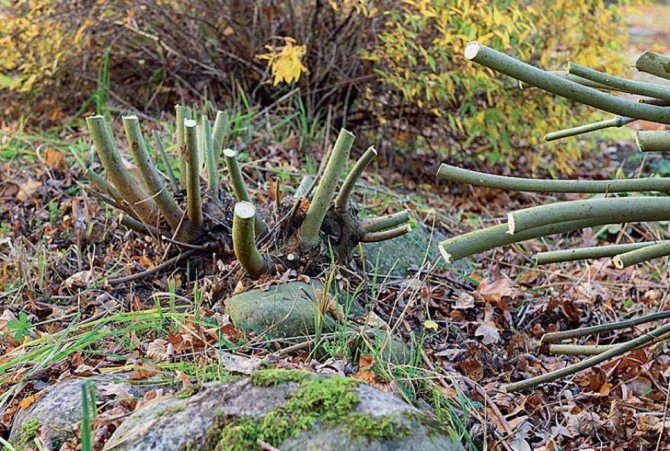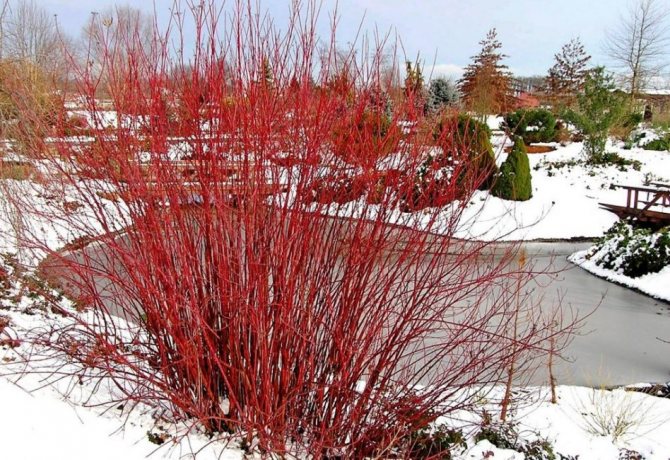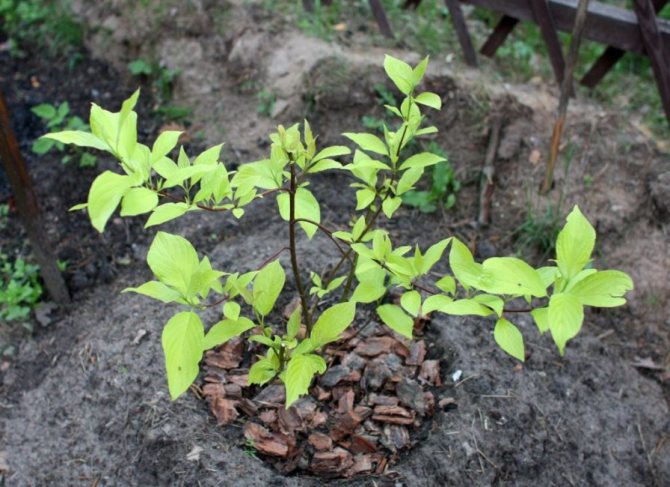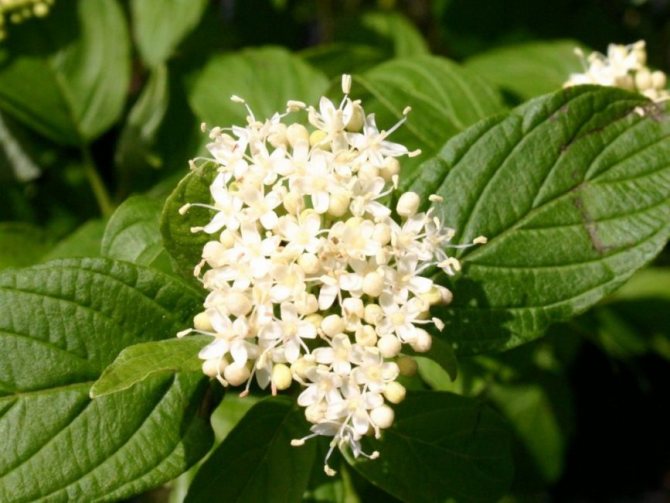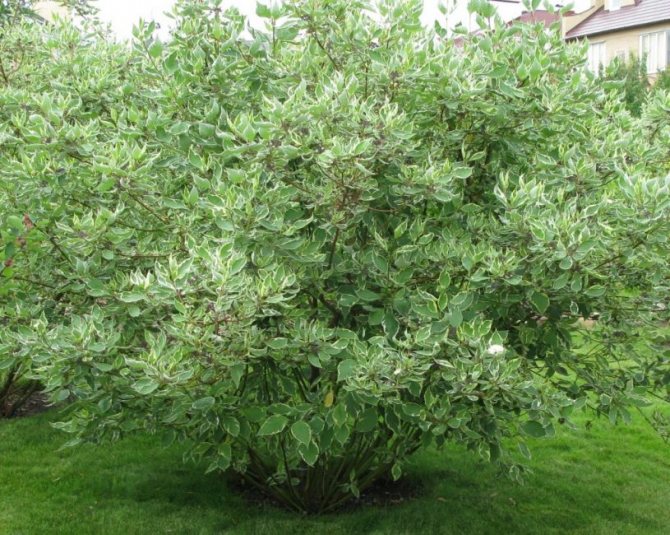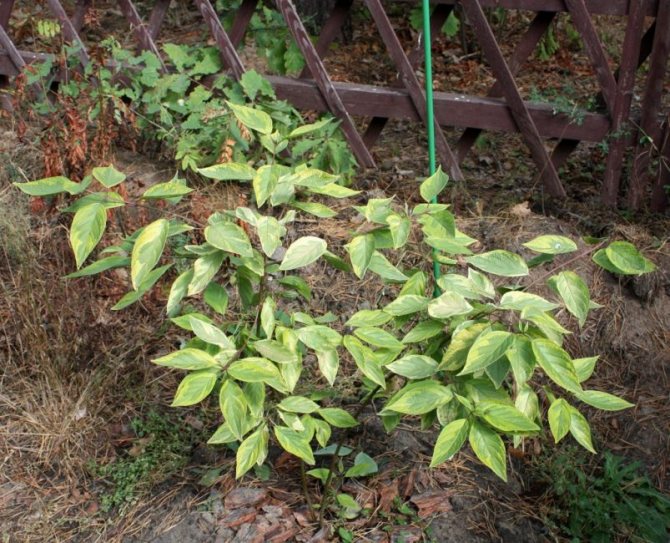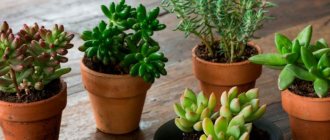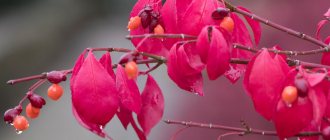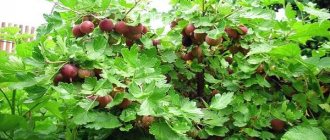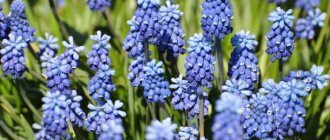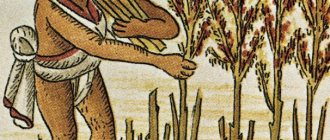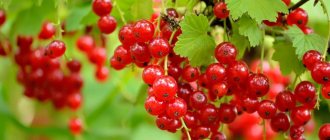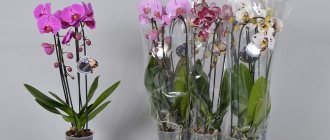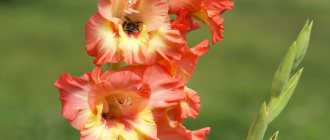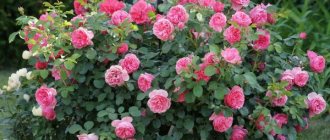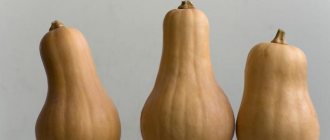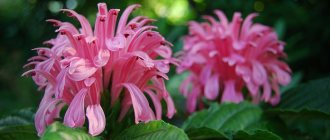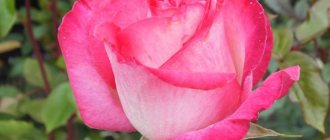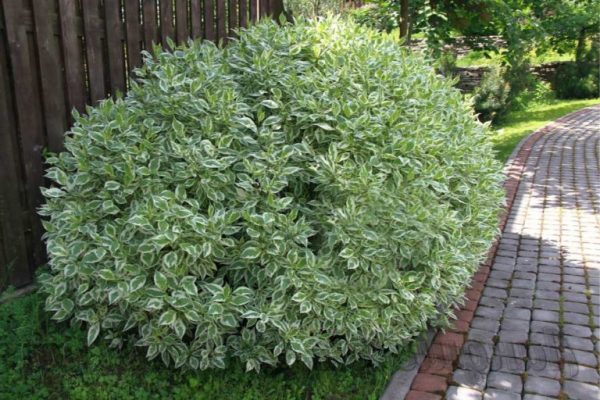
On a backyard or garden plot, you want to have bright, original and, at the same time, unpretentious plants that can decorate the landscape throughout the year.
Representatives of the Derain genus correspond to these qualities. In summer, numerous varieties of deren delight with white or golden inflorescences, colorful foliage. In autumn, you can admire the white, blue or black berries against the background of crimson or scarlet leaves. Winter allows you to see the branches of the bush - dark red, orange, olive, green, brown ...
There are a lot of types of deren, but these four are mainly used in ornamental gardening:
- Derain white
- Derain offspring
- Derain blood red
- Derain Canadian
Brief description of cultivation
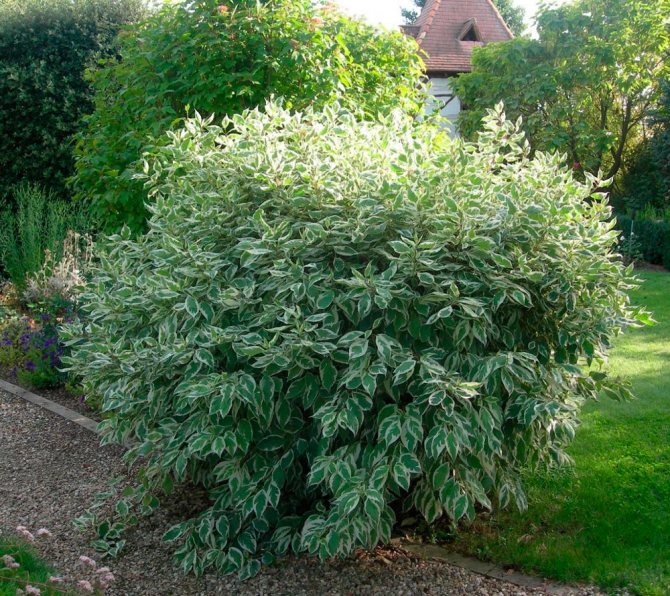

- Bloom... The shrub blooms magnificently from early to mid-summer. In the first autumn weeks, it blooms again.
- Landing... In autumn, during leaf fall or in spring - before sap flow begins.
- Watering... While the plant is young, it is watered once or twice every 7 days. Adult bushes are watered only during a prolonged drought, twice or three times a month, and from 15 to 20 liters of water are taken per plant.
- Fertilizer... If the soil is nutritious, then the lawn can grow normally without additional fertilizing. In the depleted soil in spring, 100 to 150 grams of mineral complex fertilizer should be applied to the soil under the bush. And in the summer months, 5 to 7 kilograms of humus are brought under the bush.
- Pruning... After the white dogwood turns 3 years old, they begin to cut it regularly. This is done 2 times a year, or rather: in July and August. Species and varieties that have a rich color bark should be cut off at the very beginning of spring, but only once every few years.
- Reproduction... Layering, seed method and cuttings.
- Pests... Aphids and scale insects are comma-shaped.
- Disease... Powdery mildew.
Derain kousa, or Japanese dogwood
This species, in contrast to such as white turf and blood-red turf, is a tall flowering shrub, or even a tree, and can reach a height of 9 m. found in the wild in China and Korea).
The crown is broadly spreading, old branches descend strictly horizontally and form tiers. Leaves are oval, pointed upwards. The foliage is dark green in summer (with a bluish tint below), and with the onset of autumn, their palette diverges from golden yellow to dark crimson. Flowering begins in June. The flower is a simple yellow-green head, assembled from small flowers, around which there are bracts (bractea) leaves. It is the bracts (up to 9 cm) that make the flowers beautiful, as they have an interesting shape and color. At the end of August, drupes ripen. They have a pink color and a slightly rounded shape, similar to strawberries (about 2 cm). The fruits are edible.
Decorative varieties:
- Satomi has bracts of pink-red color;
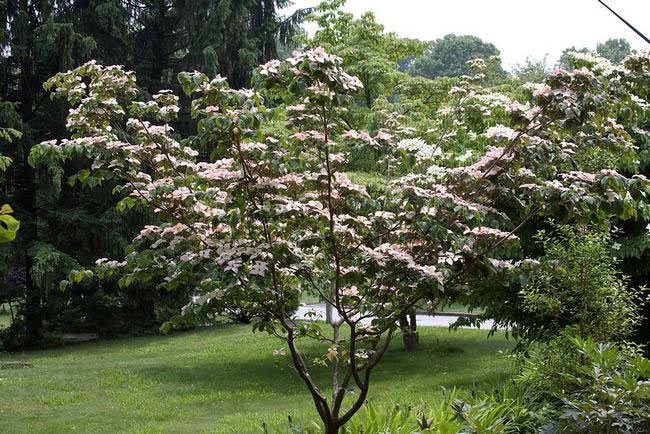

Derain Kousa "Satomi"
- Gold star it has a yellow pattern in the middle of the sheet;
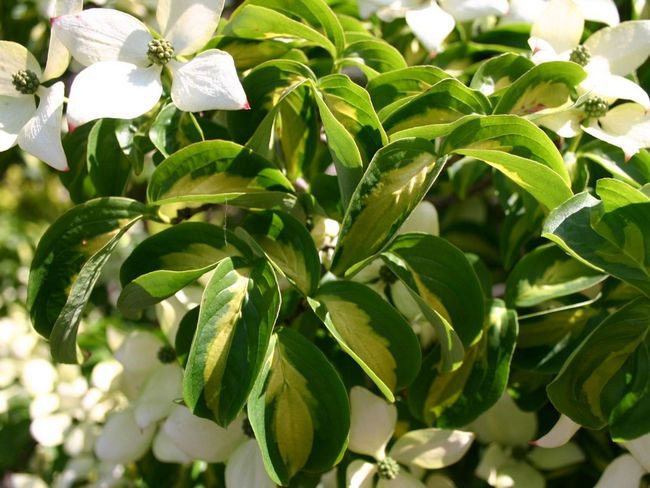

Deren kousa "Gold Star"
- Milky way has a high yield and creamy bracts;
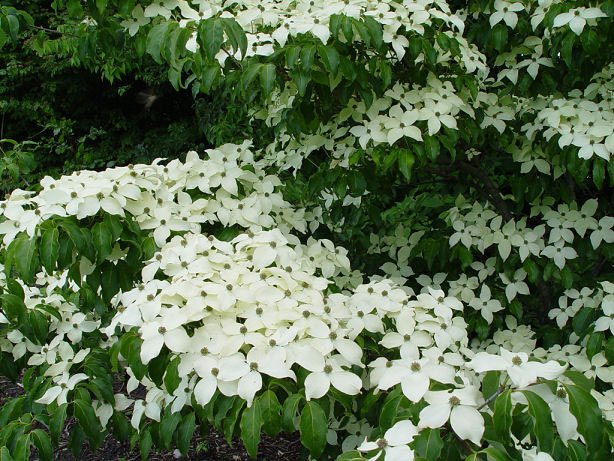

Deren kousa "Milky Way"
- Schmetterling profusely flowering variety with white bracts.
This species is considered an "aristocrat" and the most beautiful among its fellows. But, unfortunately, it is less resistant to our winters.
Features of the white deren
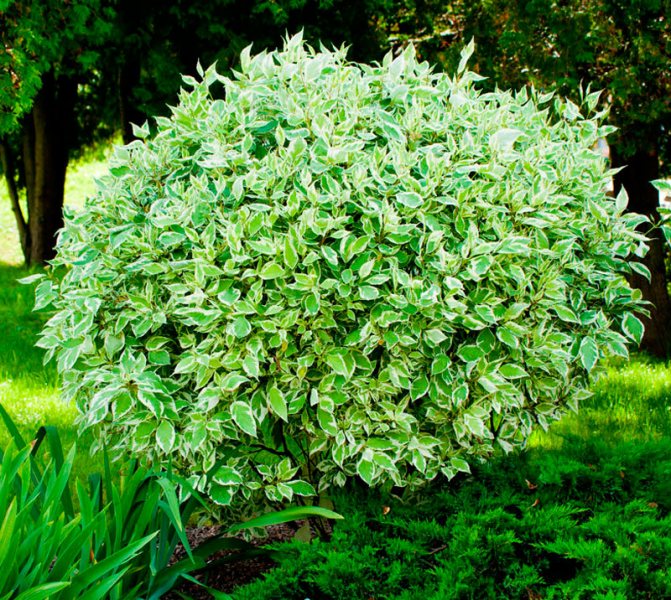

Derain white is a highly branching shrub. Its bare and straight branches are quite flexible, and over the years they begin to bend arcuate. Branches can be colored red-black, red-coral or brown-red. The height of the bush can reach up to 300 cm. The entire opposite leaf plates have an elliptical shape, petioles and pubescence on the surface. Their width can vary from 10 to 70 mm, and their length - from 20 to 100 mm. On the surface of the plate, three to five arc-shaped veins are clearly distinguishable. The front surface of the foliage is of a dark green hue, and the seamy side is pale gray. Lush apical corymbose inflorescences reach 30-50 mm in diameter, they include small white flowers with only 4 petals. Lush flowering of the shrub occurs at the beginning or middle of the summer period. And in the first weeks of autumn, repeated flowering is observed. The fruit is a berry-shaped drupe. Unripe fruits are painted in a pale blue color, which changes to white-blue as it ripens. Ripe drupes become flattened. Fruiting and flowering in white turf is possible only after it turns 2 or 3 years old.
This plant is resistant to heat, cold, tolerates winter well, can grow in the shade, any soil suits it, and it also feels great in urban conditions. It is thanks to its unpretentiousness and spectacular appearance that such a shrub has gained great popularity among gardeners.
Planting white deren in open ground
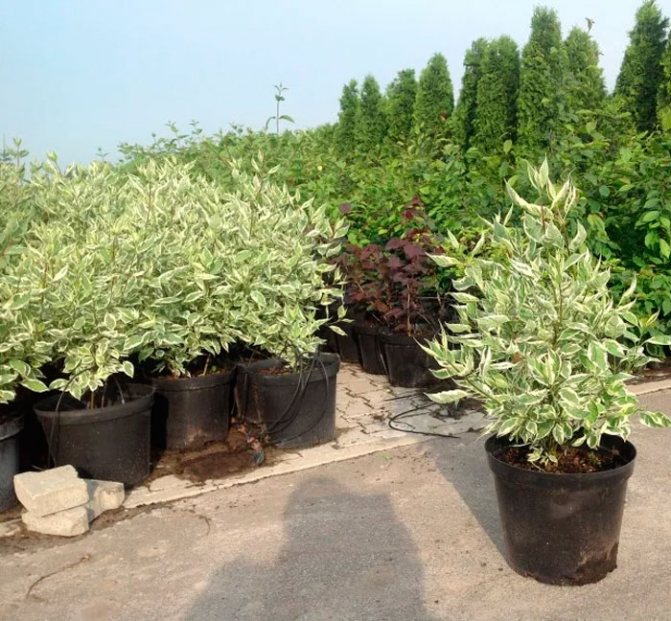

What time to plant
A seedling of white deren is planted in open ground at the beginning of the spring, and you need to be in time before the sap flow begins. Also, this procedure can be carried out in the fall during the period of leaf fall. Most gardeners prefer to plant such a shrub in the autumn, because in early spring, fully established and rooted seedlings immediately begin to actively grow. When planting a seedling in open ground in spring, experts advise that during the transfer to the hole, try to take the roots along with a large lump of earth (the more lump, the better). Thanks to this, you will be able to protect the plant from stress that may arise after transplanting.
Since white turf belongs to shade-tolerant plants, it is often planted in shaded areas or even in the shade, for example: along blank fences and walls or under large trees. But it should be remembered that varieties and varieties with variegated foliage need a lot of light, otherwise their leaves may lose their decorative effect.
Landing rules
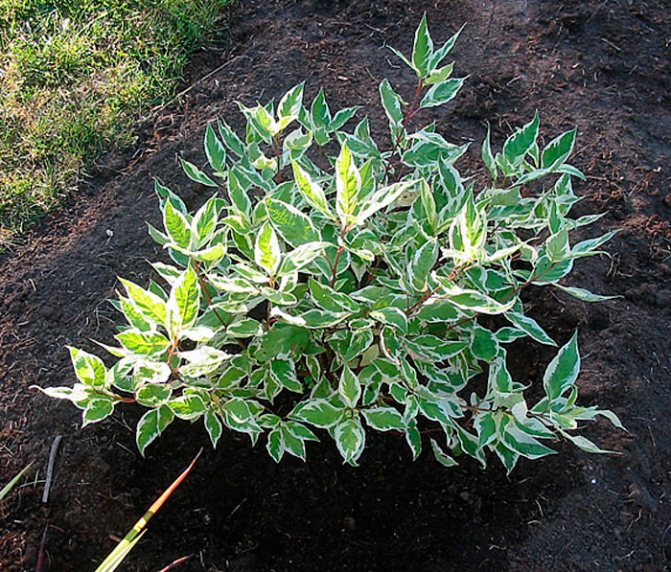

White derain differs in that almost all types of soil are suitable for it. It grows well on rocky soil, and on light sandstone, and in heavy loamy soil. But it should be borne in mind that the soil must be necessarily neutral.
It is best to use seedlings for planting that are no more than four years old, since they take root faster, and if you cut them off, they will have a large number of young shoots. Before starting to plant a seedling, its root system is immersed in water, where it will stay for several hours. During this time, the roots will have time to absorb a sufficient amount of moisture, thanks to which they will better tolerate the transplant. If a seedling with a closed root system is used for planting, then it is not necessary to pre-soak it.
The size of the hole should be ¼ part larger than the volume of the root system, taken together with a lump of earth. If the soil on the site is swampy, then white turf can grow normally on it only if you provide it with good drainage. To do this, at the bottom of the landing hole, a drainage layer of sand should be made, which is connected to crushed stone or pieces of brick. In thickness, such a layer should reach about 15 centimeters.Please note that if the groundwater at the site is deep enough or the ground at the site is dry, then drainage is not done at all in the planting pit, or the bottom is covered only with a layer of sand.
After the seedling is placed in the planting hole, it should be covered with a soil mixture consisting of humus, compost and the top layer of soil (remaining after the preparation of the hole). When the bush is planted, compact the surface of the soil in the trunk circle and pour plenty of water over it. When the liquid has been absorbed, cover the soil around the bush with a layer of mulch (organic material). Make sure that the root collar after planting is on the same damage as the surface of the site.
Features of planting a plant
To get a beautiful and strong shrub, it is important to prepare well for planting. When choosing seedlings, observe the following rules:
- buy seedlings only in a specialized store or from experienced gardeners to grow what you need;
- when buying a seedling, ask about its age;
- in order for the plant to quickly take root in a new place, it is recommended to buy a three-year-old seedling;
- seedlings should be free of chips and scratches. The appearance of the branches should be strong and healthy;
- if the purchased seedling has dry roots, it should be kept in water for a while before planting.
To get a conceived composition for decorating a garden, when buying turf seedlings, you need to familiarize yourself with all their characteristics, as well as what kind of care they will need.
Choosing a place and soil
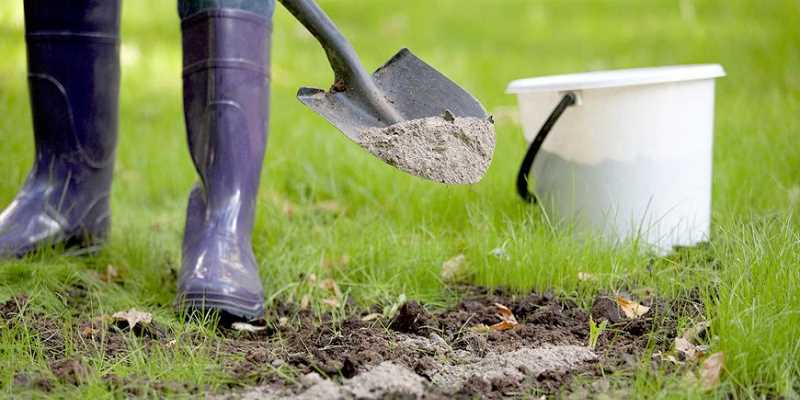

Derain grows best in a bright area with little shade. In such a place, the shrub reveals its beauty of shoots and foliage to the maximum. To create a hedge, grass can be planted along the paths of the garden.
The plant can be planted in any soil. But it should be remembered that it does not really like acidic soil. Therefore, give preference to neutral or slightly alkaline earth. The plant will grow best in humus-rich soil.
On well-loosened soil, any kind of turf will thrive best.
Before planting a shrub, it is important to make sure that there is no close groundwater near the roots. The soil must be dug up, fertilized, and the bottom of the pit must be covered with a drainage layer.
White derain care
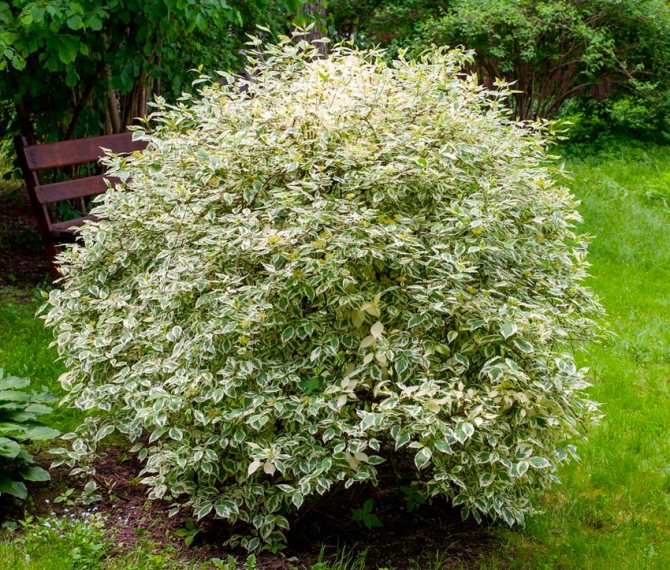

Despite the fact that the white dogwood is distinguished by its unpretentiousness, it still needs to be well looked after. It should be looked after in almost the same way as for other horticultural crops.
Watering
Particular attention should be paid to watering young, immature bushes. They are watered regularly 1 or 2 times every 7 days. Older shrubs need watering only during periods of prolonged drought. So, in the summer during a drought, it will be enough to pour from one and a half to two buckets of water under each bush 2 or 3 times a month. When the bush is watered, loosen the surface of the soil in the trunk circle and pull out all the weeds.
Fertilizer
White turf does not need feeding, especially if the soil on the site is saturated with nutrients. However, if you want the bush to be powerful and bloom profusely, then in the springtime, from 100 to 150 grams of the mineral complex should be added to the soil of the trunk circle, and in the summertime - from 5 to 7 kilograms of humus or compost.
Pruning
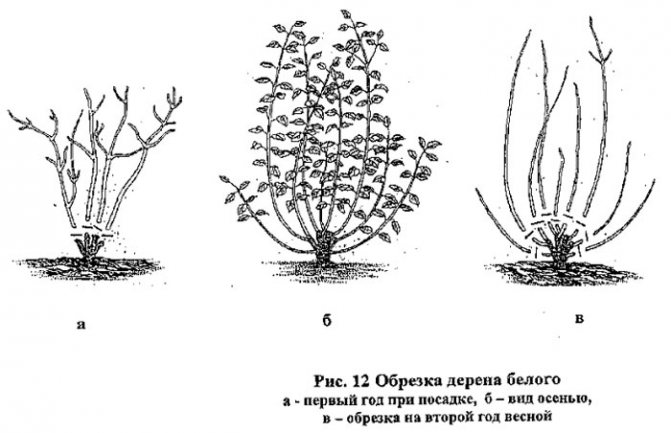

After the shrub is 3 years old, they begin to carry out systematic formative pruning. If this rule is neglected, then the white deren will soon begin to gradually bare the lower part of the bush. In order for the shrub to be always compact and attractive, every third or fourth stem should be completely cut off. All weakened, injured and diseased branches are also cut out, leaving only the strongest and most developed.If white turf is used to create a hedge, then the first shearing should be done in July, and again in August (when the stems will grow).
If you grow varieties whose bark has a bright color, then they are sheared only once in several years, and this procedure is carried out in early spring, before the buds open. In this case, the bush should be shortened to 20 centimeters from the soil surface, which will allow it to rejuvenate: it will begin to actively grow a large number of young branches.
You can shape the crown of a deer in various ways. The most popular options are: arc, cube, column, hemisphere and ball. Another crown of such a shrub can be formed in the form of a standard tree (in 1 trunk). Some of the varieties and varieties of this plant do not need formative pruning, since the shape of their crown is already quite attractive. However, all the same, such bushes are regularly subjected to sanitary pruning.
Diseases and pests
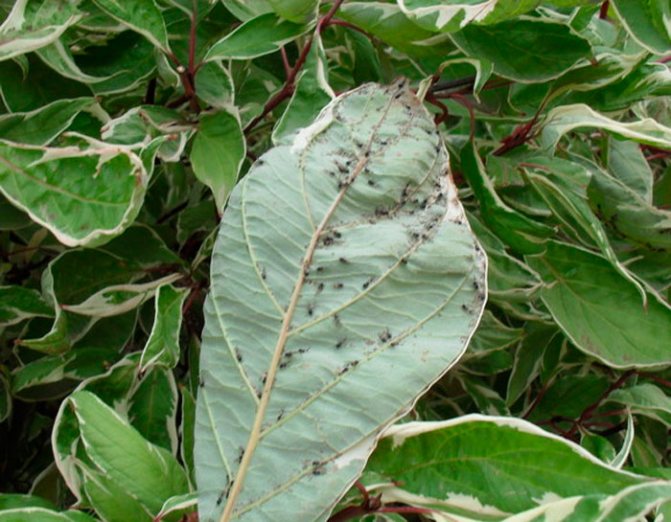

An adult, powerful shrub of white deren has a high resistance to diseases and pests. But while the shrub is young, it is often affected by powdery mildew, and pests such as aphids and comma-shaped scale insects can also settle on it.
In a plant affected by powdery mildew, a whitish bloom forms on the surface of the foliage in spring. Cut off all diseased branches as soon as possible and treat the plant with Fundazole solution or Bordeaux mixture (1%). And to get rid of pests, spray the bush with a solution of acaricide, for example: Aktellik, Bankola, Aktara, Akarin or Biotlin.
Diseases and pests
The ornamental foliage of the deren does not differ in juiciness, therefore it is very rare to see deer pests on the bushes.
back to menu ↑
Read also: Hosta: description, types and varieties, planting in the open ground and care, possible diseases (120+ Photos & Videos) + Reviews
Insect pests
The distribution of caterpillars occurs only during the years of mass reproduction. However, each owner monitors his plantings and will not allow them to multiply.
Neglected garden plots with lawn are damaged by a leaf roll. But aphids attack plants most often. She adores young, not lignified shoots. White aphids are thrown onto the lawn from the black elderberry, therefore, when planting plants, it is necessary to take into account their neighborhood. If, nevertheless, the neighborhood is not taken into account and these 2 crops grow together, it is recommended to spray the black elderberry with insecticides so that the aphid does not spread to other plants. It is recommended to carry out treatment for aphids with a solution of the drug "Decis".
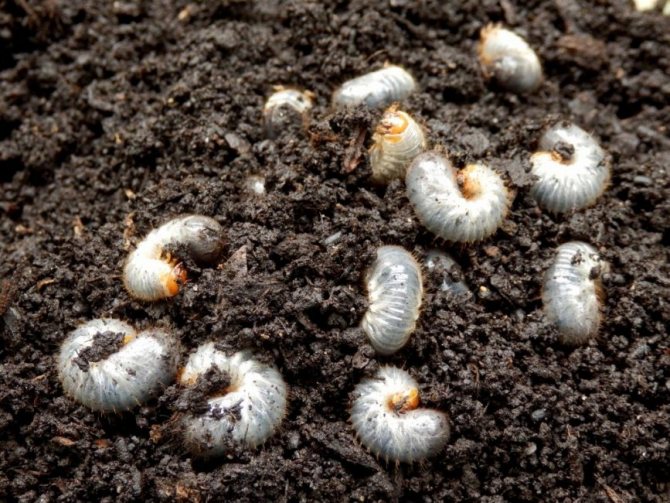

May beetle larvae removed from the ground during digging and preparation for deren planting
When pests are found, it is important to spray the plants with preparations in time to prevent the development of a sooty fungus. This attack appears at the site of aphids laying waste products. Infected specimens must be sprayed with chemicals, and the affected foliage must be removed.
On young shoots, derena sometimes settles svidine gall midge... The presence of a pest is indicated by swollen tubercles on the shoots. To combat svidinovy gall midge, no effective drugs have been invented. To destroy the pest, you can use the folk method of struggle: cut out the affected branches, take them away from the site and burn them.
Young shoots suffer from the invasion spider mite... Hot and dry weather contributes to the spread of the pest. But the insect is easy to fight, you can defeat it by spraying the plant with any insecticide. It is desirable to carry out the treatment 3 times at intervals of 1 week.
On the flowers of the deren settle ordinary bronzes... They prefer to feed on the light colored petals of the plant. To combat insects, you need to purchase preparations intended for the destruction of coleopteran insects.
May beetle larvae - the enemy for the root system of the deren.However, only young roots are susceptible to damage. Before planting deren in new soil, it is advisable to dig up the area manually, spill it with a solution of any insecticide, there are larvae - they need to be removed.
Insect pests are not so terrible for a plant, lizards, shrews, vole mice, moles cause great harm.
back to menu ↑
See also: Potatoes: a description of the 73 best varieties + Reviews of gardeners
What is sick?
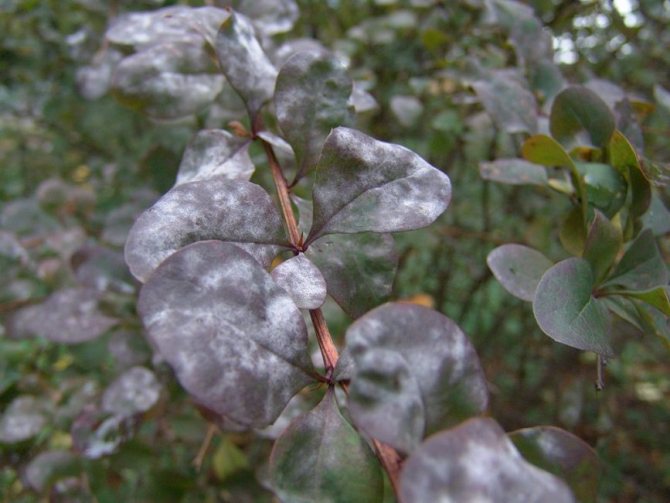

Characteristic white bloom on deren leaves
Fungal diseases and mold, wood cancer bring great harm to the plant.
In wet weather, a white bloom appears on the leaves - powdery mildew... Overcrowding of plantings contributes to the spread of the disease. The disease very quickly captures free and healthy areas, so the grower must take immediate measures to combat the disease. From insecticides for the fight against powdery mildew use "Skor", "Topaz".
Various spots are very rare. In order for the disease to arise, it is necessary that several factors coincide at once:
- frequent changes in weather conditions
- poor care
- presence of an infected instance
- trimming with non-disinfected materials
In addition, the plant can get sick with viral mosaic, tubercular necrosis of the bark. Closely growing bushes of red currants or roses can contribute to the spread of this disease. The disease is accompanied by drying of the shoots, the formation of pads on the affected shoots. To combat the disease, a mechanical method is used: cutting out the shoots by hand and burning them. After pruning, it is recommended to spray the diseased plant with a solution of Bordeaux liquid.
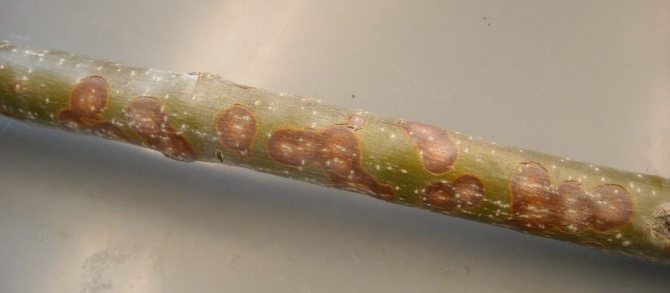

Cytosporosis of the bark
Deren shoots can dry out. This is facilitated by cytosporosis of the cortex... It is also considered one of the most dangerous diseases of deren, therefore, if a disease is detected, immediate measures must be taken. If you run and let it go, you can destroy the plant.
In order to prevent diseases, it is not recommended to plant deren bushes close to each other. When planting, it is important to ensure that the area is well ventilated and not surrounded by a solid fence. In addition, it is advisable to plant black, red currant away from the elderberry. If these plants become infected with something, there is a high probability that the disease will spread to the lawn.
Juniper is often sick with rust, which means that if you plant the grass near the juniper, the plant will get sick with rust. Neighborhood with roses, some conifers is undesirable.
Agrotechnical methods of protecting plants from diseases and pests
- Plants should not be planted in low-lying areas, the soils of which are in constant moisture.
- When choosing a site, you should not plant on a site blown by winds from the northeast and from the north. They are very cold and have a detrimental effect on the plant.
- Planting in compacted soils will lead to the development of fungal diseases and rot.
- During planting, it is important to respect the distance between the seedlings. If planted densely, their stems will subsequently become intertwined, and this is fraught with the development of a disease: powdery mildew, sooty fungus. During pruning, you need to thin out the plantings, especially for hedges created from deer.
- After work, all tools must be disinfected to avoid unwanted contamination of other plants.
A simple procedure, which consists in loosening the soil near shrubs and getting rid of weeds, helps to get rid of the larvae of many insects. Coma of this, dogwood is a deciduous plant, therefore, it is necessary to remove fallen leaves annually, since many different larvae can be found in it, which will harm the plant.
It is recommended to use rotted compost, peat, humus, crushed bark of trees and shrubs as mulch.
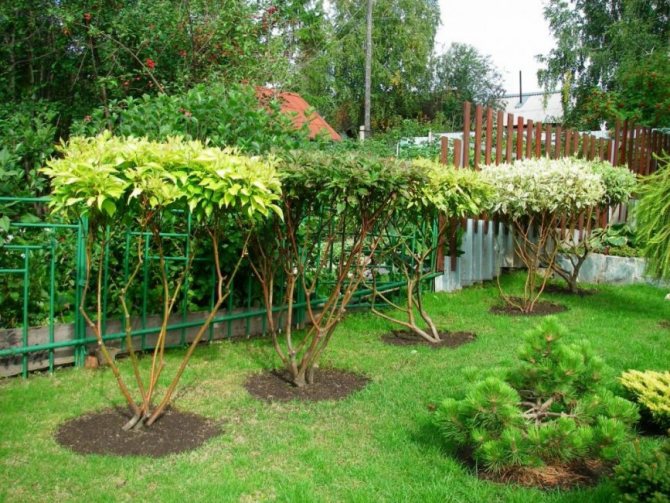

Derain in landscape design
Derain is an unpretentious plant that, with minimal care, will decorate a summer cottage with its multi-colored variegated foliage and decorative shoots. The plant can be used in single and group plantings, however, when planting, you need to take into account the size of the turf crown in order to provide it with the opportunity to reveal itself in all its glory.
See also: Landscaping of your site with your own hands - (130+ Photo ideas & Videos) + Reviews
Reproduction of white deren
White dogwood can be propagated by generative (seed) and vegetative (cuttings and layering) methods.
Growing from seeds
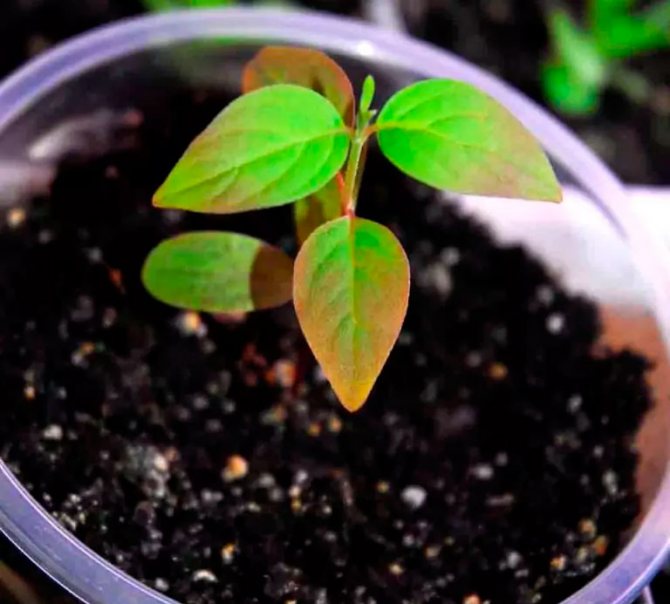

The seed material of this plant has a very high germination rate (about one hundred percent). Sowing seeds is carried out in the autumn, immediately after they are collected. Since the seeds retain their germination for about 5 years, sowing can be postponed for the spring, but in this case they will need stratification: in winter they are kept at a temperature of 5 degrees for at least eight weeks. When sowing, remember that there should be no more than 5-15 seeds per 1 square meter of the plot, which are buried in the soil by 40-50 mm. You will not see seedlings soon, often they appear only in the second or third year after sowing. And only after 5–8 years, a bush grown from seeds will have a standard size for a given plant. That is why most gardeners prefer to use vegetative methods for reproduction.
Propagation by cuttings
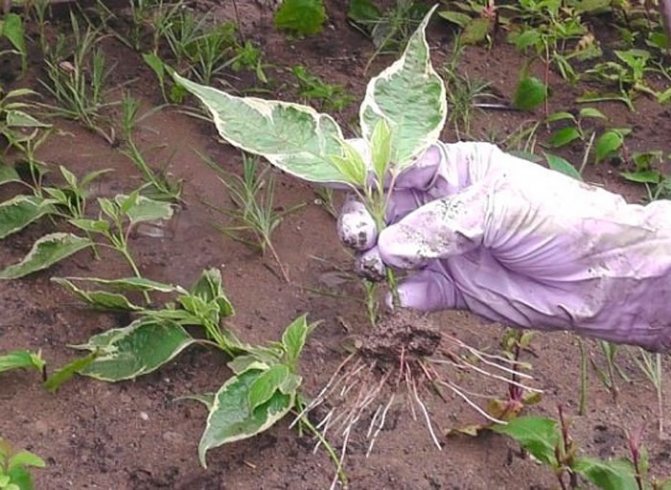

From a powerful and healthy plant in the first days of June, it is necessary to cut off slightly lignified stems, and on each cuttings there should be from 7 to 9 buds. Plant the rooting cuttings in a container filled with a suitable potting soil. Cuttings root best in a greenhouse. During rooting, do not forget to water the cuttings in a timely manner, as well as feed them with mineral fertilizers and organic matter. By the first autumn weeks, the cuttings should already be well rooted and can be planted in the garden.
Reproduction by layering
The easiest way is to propagate white turf by layering. To do this, in the autumn, select a stem on the bush that grows very low from the ground surface. Dig a small groove and fix the stem in it, leaving only the top on the outside. Cover the groove with fertile soil. Throughout the summer period, the layers are regularly watered and fed. In late autumn, it is recommended to cover the layering with a layer of spruce branches or loose leaves. With the onset of spring or the next autumn period, separate the layers and plant them in a new permanent place.
Care nuances
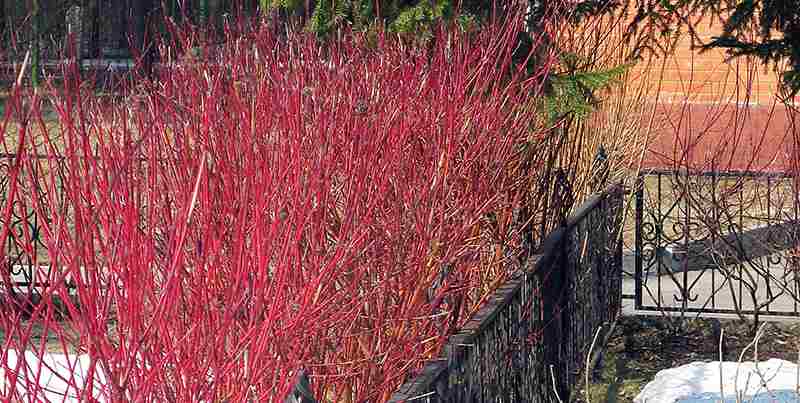

Deren Shpeta is not a whimsical plant, but still needs regular care. Shrub care is as follows:
- Make sure that the soil under the bush is constantly wet. After each watering, it should be mulched. Ground cover plants can be planted around the trunk of the shrub to retain moisture.
- In order for oxygen to penetrate to the roots, it is necessary to regularly loosen the soil. The procedure must be carried out carefully and not too deep to avoid damaging the surface roots of the turf.
- Every spring, it is necessary to carry out a comprehensive feeding of adult plants.
- Shpet's white turf withstands frosts. Therefore, it is not necessary to cover it for the winter, but first-year seedlings need mandatory shelter, since they are still too small and young, and will not be able to withstand severe frosts.
- To make the bush look beautiful in winter, you need to cut it off in early spring, leaving only twigs 20 centimeters high. Thanks to this procedure, the shrub will be renewed, it will start up many young and strong shoots.
- Pruning is recommended every couple of years. But, pruning of old branches is allowed every year.
If the turf is planted as a hedge, it should be pruned after the branches are no longer actively growing, around mid-summer. The shrub is cut for the first time four years after planting.
Improper plant care can lead to the development of diseases and the attack of pests. The roots can begin to rot when the soil is severely waterlogged. Also, excess moisture can provoke the development of a fungal disease. To correct this situation, reduce watering, treat the sod with colloidal sulfur or Bordeaux mixture.
Derain can be attacked by pests that inhabit other plants growing nearby. To get rid of them, all the bushes need to be treated with special insecticides.
Deren white varieties
The white deren has a large variety of varieties and several decorative garden forms. The following garden forms are distinguished:
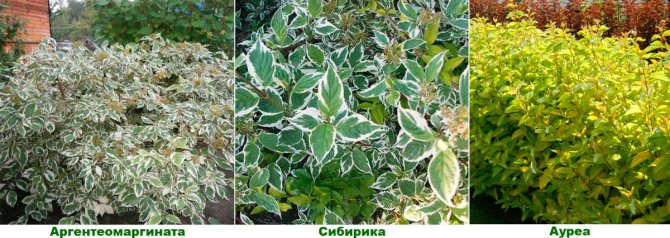

- Argenteomarginate... The bark of such a shrub is red, and its green foliage has a whitish-cream border. In autumn, the leaves turn a carmine-red hue. Most of all, gardeners value such a variety of this form as Elegantissima: the stems of three-meter bushes are red, the foliage has an uneven whitish-cream edging, as well as cream stripes and spots.
- Siberica... This undersized shrub has deep red stems. The greenish foliage changes its color to brownish red in autumn. Popular varieties:
- Siberica Variegata - at a two-meter shrub, the foliage is decorated with a wide border of a creamy shade, and also creamy strokes and spots, in autumn it acquires a purple hue, the variety is similar to Elegantissim, but it grows more slowly, which allows it to decorate small gardens;
- Aurea - the two-meter bush has pale red stems, light yellow foliage, whitish-cream inflorescences and white-blue fruits.
- Kern... On the surface of the green foliage there are specks of a yellow tint.
- Shpet... This form was born about 100 years ago. The height of the bush is about 200 cm, its stems are reddish-brown, and the green foliage is decorated with an uneven edging of a yellow-golden hue. In autumn, the foliage turns purple.
- Kesselrings. The stems are colored black-purple or reddish-black.
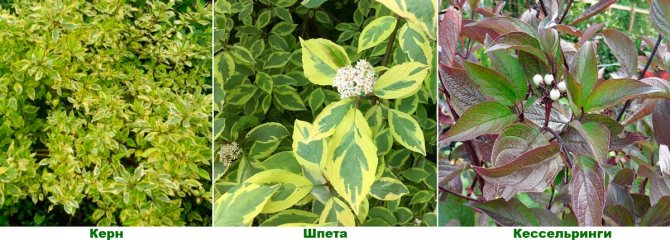

The following varieties are popular:
- Astrosanguinea... The one and a half meter bush has raspberry stems and green foliage.
- Allemans Compact... While the stems are young, they are colored red. The color of the leaves is rich green.
- Aurea Elegantissima... The two-meter shrub is decorated with yellow-feathery foliage.
- Blood Good... The height of the bush varies from 200 to 300 cm. The color of the foliage and stems is coral red.
- Gochaulti (Guhalti, or Gusholti)... On the blood-red stems, slightly drooping green leaf plates grow with specks of pink, white or red.
- Ivory Hallow... The ball-shaped crown consists of red stems and green leaf plates, decorated with a creamy white wide border.
- Siberica Ruby... The stems of the one and a half meter bush are red-coral. Dark green, rounded foliage, turning purple-red in autumn.
Types and varieties
Derain white
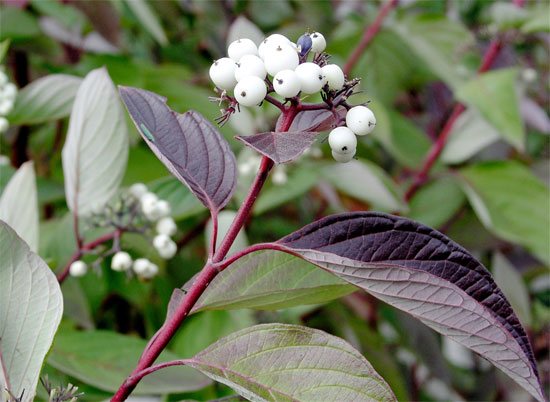

He is also Tatar derain or white svidina (Cornus alba L.) - one of the most famous varieties of deren. Shrubs of irregular shape, up to 3 m. Shoots are erect, less often slightly inclined. Flowers are small, collected in shields. Blooms for about two weeks in June. Drupes appear in August - September. All varieties are winter-hardy, and if they freeze, they recover very quickly.
The most famous varieties of white deren:
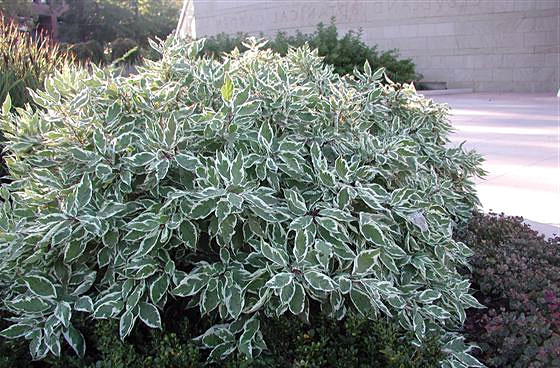

"Sibirica Variegata" - a large bush with a dense crown, varigative leaves, green-white, winter color of the shoots - bright scarlet.
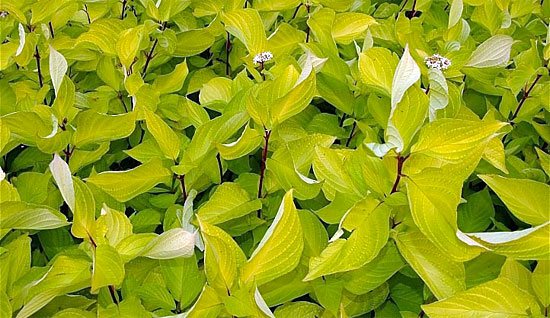

"Aurea" - the variety has yellow foliage.
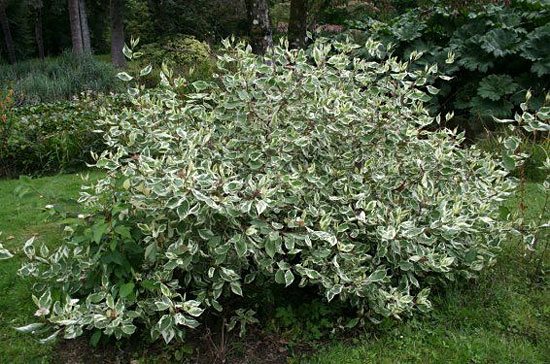

"Elegantissima" is a very large bush, up to 3 m tall. The shoots are reddish, the leaves are gray with a white border, the autumn color varies from orange to burgundy. Even very strong pruning is tolerated.
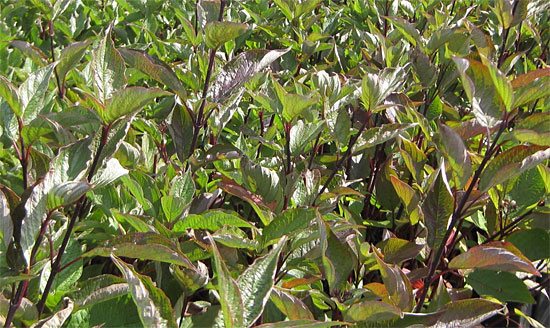

"Kesselringii" - is distinguished by shoots of brown-purple color.
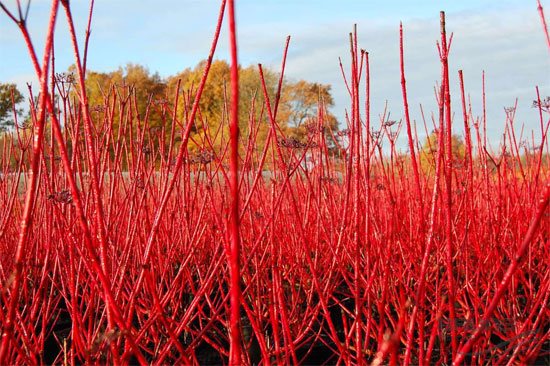

"Sibirica" - the variety is noticeable by the coral-red color of the shoots in winter and large, green leaves.
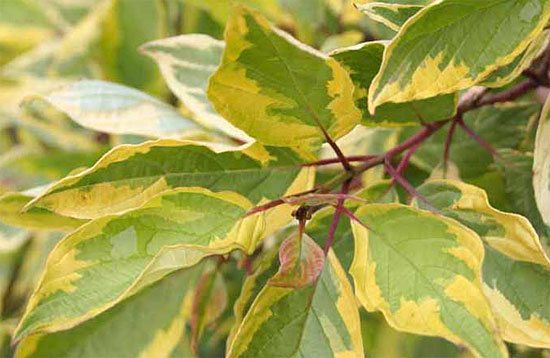

"Spaethii" - a large bush, up to 2 m tall, green leaves with a yellow border
Derain offspring
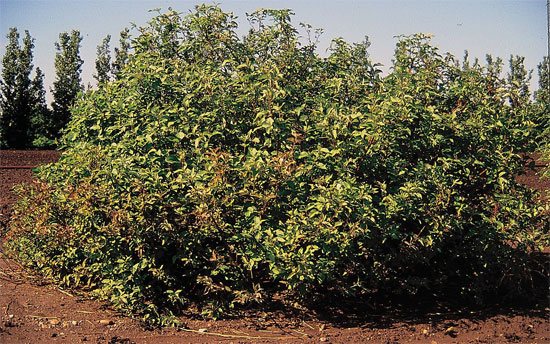

Also known as svidina svidina (Cornus stolonifera). It differs from the white deren in a large number of offspring. Deciduous shrub with large oval leaves up to 10 cm long. Shoots are shiny, flexible, bend easily and take root near the bush. The flowers are small, yellowish-white, collected in inflorescences. Flowering lasts from late May to early June. The scion turf bears fruit in August - early September. The fruit is a white drupe.
The most famous varieties of offspring deren
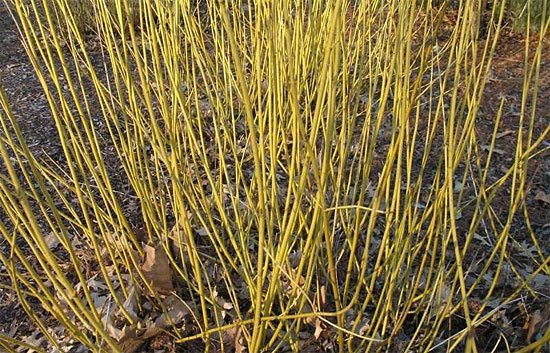

"Flaviramea" - variety with green or yellow shoots
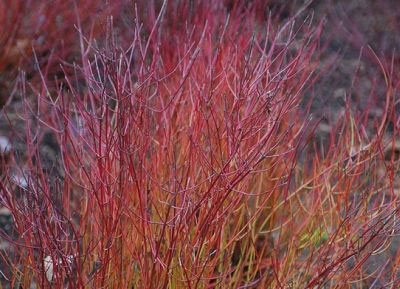

"Kelsey" - stands out with a wide crown and yellowish branches with bright red tops
"Winter Flame" - the variety is characterized by bright yellow shoots
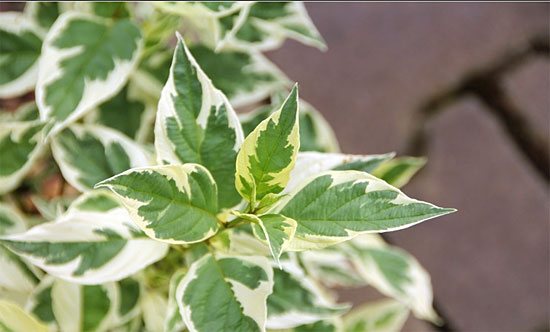

"White Gold" is a very large shrub with yellow rooting branches. Leaves with a white border and flowers are yellowish-white.
Derain red
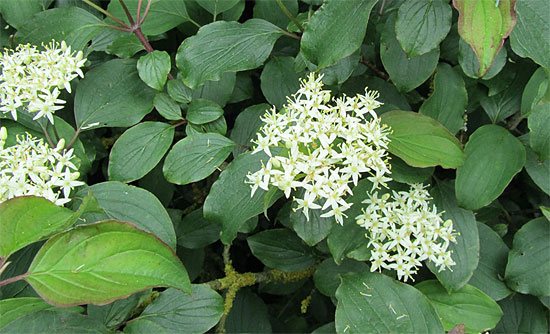

Also known as blood-red svidina (Cornus sanguinea). A very large deciduous shrub about 4 m high. The crown is branched, with drooping shoots. Shoots can be green, purple-red, or yellow, depending on the variety. Leaves are light green below, densely pubescent, turn blood-red in autumn. The inflorescences consist of white flowers, the diameter of the inflorescences is up to 7 cm. The beginning of flowering - matz - June. Blue-black fruits ripen in August.
The most famous varieties of red deren:
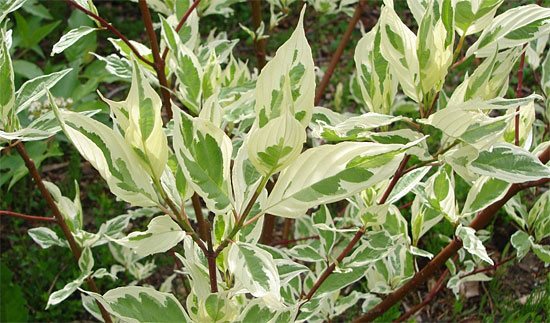

Variegata is a variety with greenish-brown shoots that turn red in the sun. Leaves with a white border, pubescent, turn purple in autumn.
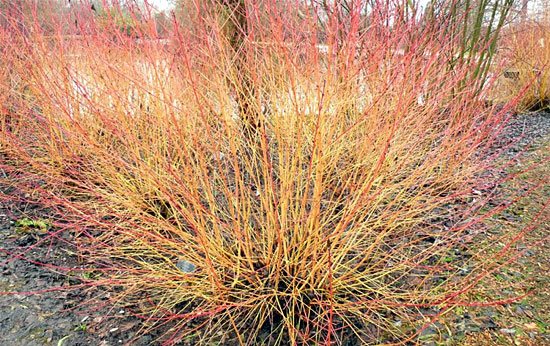

"Midwinter Fier" - the variety has red-orange shoots.
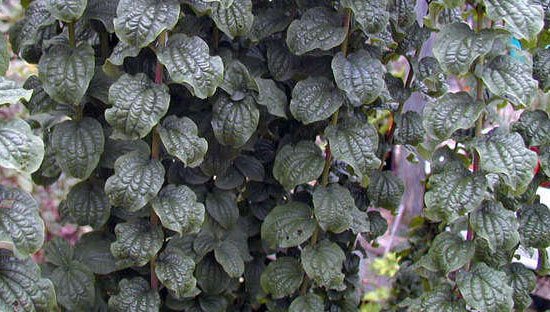

"Compressa" - the variety has small, curved, wrinkled leaves on erect shoots.
Derain male
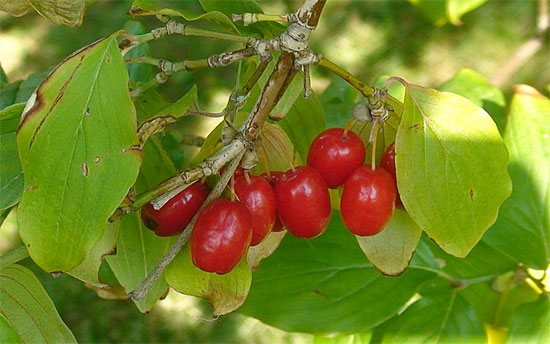

He's the common dogwood (Cornus mas) - a fairly southern species of deren. In the wild, it can be found in the Crimea and the Caucasus, Ukraine and Asia. More often found in the form of a small tree. The bark is dark brown, flaking. The leaves are large, up to 10 cm long, light green. The flowers are yellowish, small, collected in a brush, bloom in the spring before the leaves appear. The fruit is a drupe, and edible. Ripens in September.
Dogwood is unpretentious, drought-resistant, tolerates shading well. Begins to bear fruit early. Fruiting annually up to 90 years. For cross-pollination, you need two bushes. There are varieties with red and yellow berries.
Derain white in landscape design
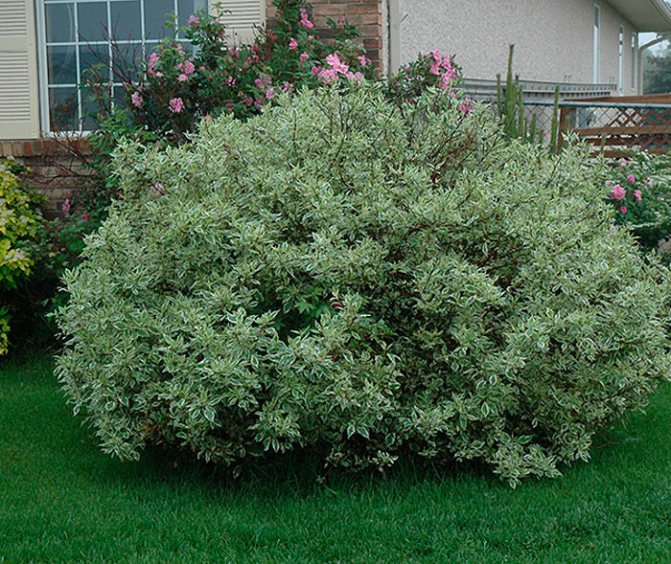

Derain white is often used to create a hedge, as it is very plastic and tolerates a haircut well. Singly and in groups, flowering and variegated forms and varieties look very attractive.
This plant is also often used to strengthen the shores of an artificial reservoir, since it does not suffer from stagnant liquid in the soil, and looks good next to hosts and other coastal perennials. This shrub is also often planted in areas with a multi-level complex relief. Also, such a plant is often planted in the shade of large trees.
And also white dogwood looks favorably against the background of evergreens, as it has spectacular foliage and stems. This culture retains its attractiveness throughout the growing season, which is its main advantage.
Plant varieties
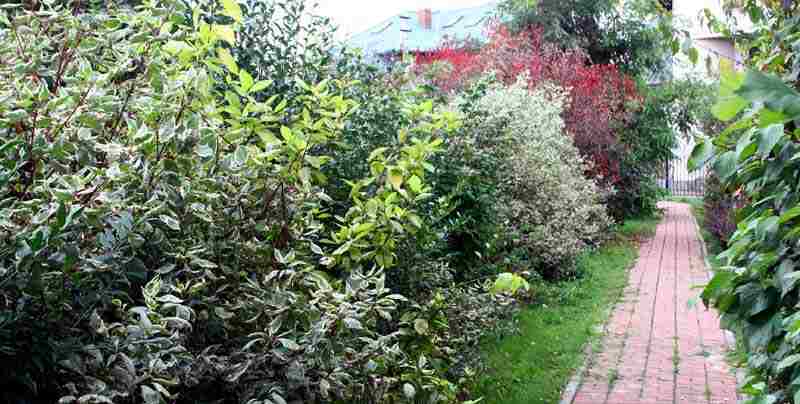

Derain white is of different types. The most common varieties of deren are considered:
- Derain white Argenteomarginata has variegated foliage. It grows in a variety of soils with good moisture. Retains decorative effect when grown in the shade. It tolerates frost and pruning procedure. The plant has variegated leaves and red shoots that brightly adorn the winter garden. It is planted both singly and in groups. The shrub blooms with yellowish-white flowers in May - June. After flowering, white fruits are formed.
- Shrub white Aurea has matte yellow leaves and burgundy shoots. It grows in damp places, tolerates drought and frost.The shrub is planted as an independent plant or in groups in order to create a hedge or mixborders. The turf blooms with creamy white flowers in May - June. After flowering, bluish-white fruits are formed.
- Derain white Gouchalti has variegated, yellow-green foliage. Doesn't need any special care. Can grow in shaded areas with moist soil. Firmly endures frost. Often this kind of turf is planted in city parks to decorate the territory. The shrub grows rapidly. It blooms with white flowers in June. After flowering, it is covered with bluish-white fruits.
- The white Kesselring shrub is considered a deciduous shrub that has bright green leaves and purple-black shoots. Not whimsical in leaving. Firmly tolerates frost and the procedure for cutting shoots. Can grow in shady areas. If you plant such a variety of deren with shrubs that have shoots of yellow or red color, you can get a decorative garden decoration in the winter season. Often this turf is planted as a hedge. Can grow in groups or singly. It blooms in May - June with white and pink flowers. After flowering, the shrub is covered with pink fruits.
- The Cream Cracker shrub has thin decorative branches. Young bushes consist of red shoots. The foliage of the plant is covered with creamy white stripes. The sod variety can grow in the shade, is not whimsical to care for, easily tolerates frosts, is not afraid of diseases and pest attacks. Cream Cracker is planted in groups. Blooms in July - August with creamy white flowers. After flowering, the shrub is covered with white fruits.
- The Siberian white shrub grows rapidly in different directions. The shrub has erect, bright coral and red shoots. It does not need special care, it can grow in a shaded place with moist soil, it is good for the pruning procedure. Tolerates winter frosts. It blooms with yellowish-white flowers in June. After flowering, the shrub is covered with white fruits;
- Derain white variety Shpet has purple-purple leaves in autumn, rich red shoots in winter, and yellow-green foliage in summer. Growing fast. Can be planted in any soil in a shaded area. Frozen young shoots can recover on their own in the spring after the onset of heat. This type of plant is often planted both singly and in groups to create hedges. The shrub blooms with white flowers, which, after flowering, are formed into white fruits. Flowering occurs in late spring and early summer.
- Derain white Karantus has flexible beautiful coral twigs. Blooms in June. Can bloom again in autumn, around September. It blooms with small flowers that form corymbose inflorescences. The field of flowering shrub is covered with round, whitish berries. The plant variety tolerates drought and frost.

